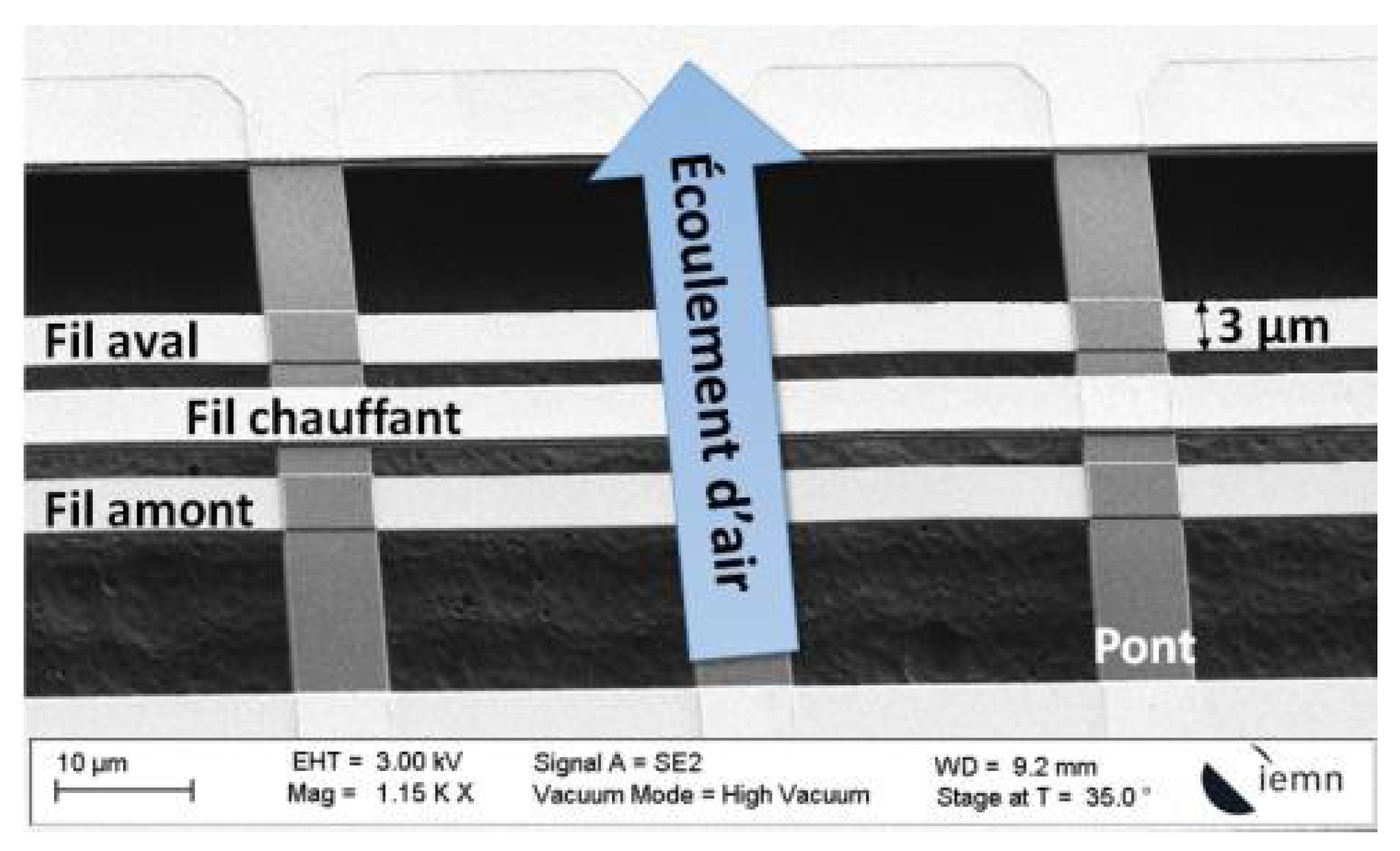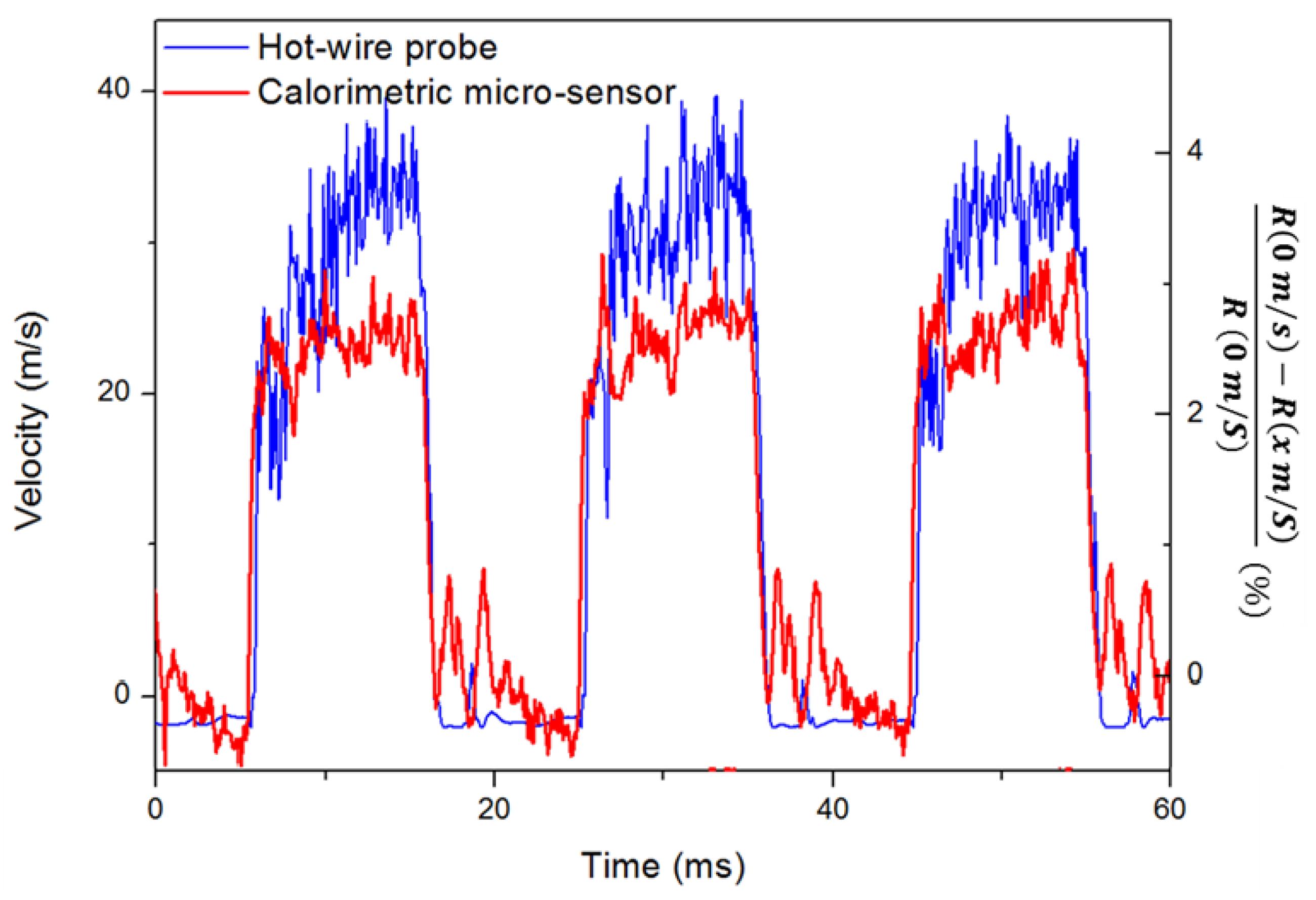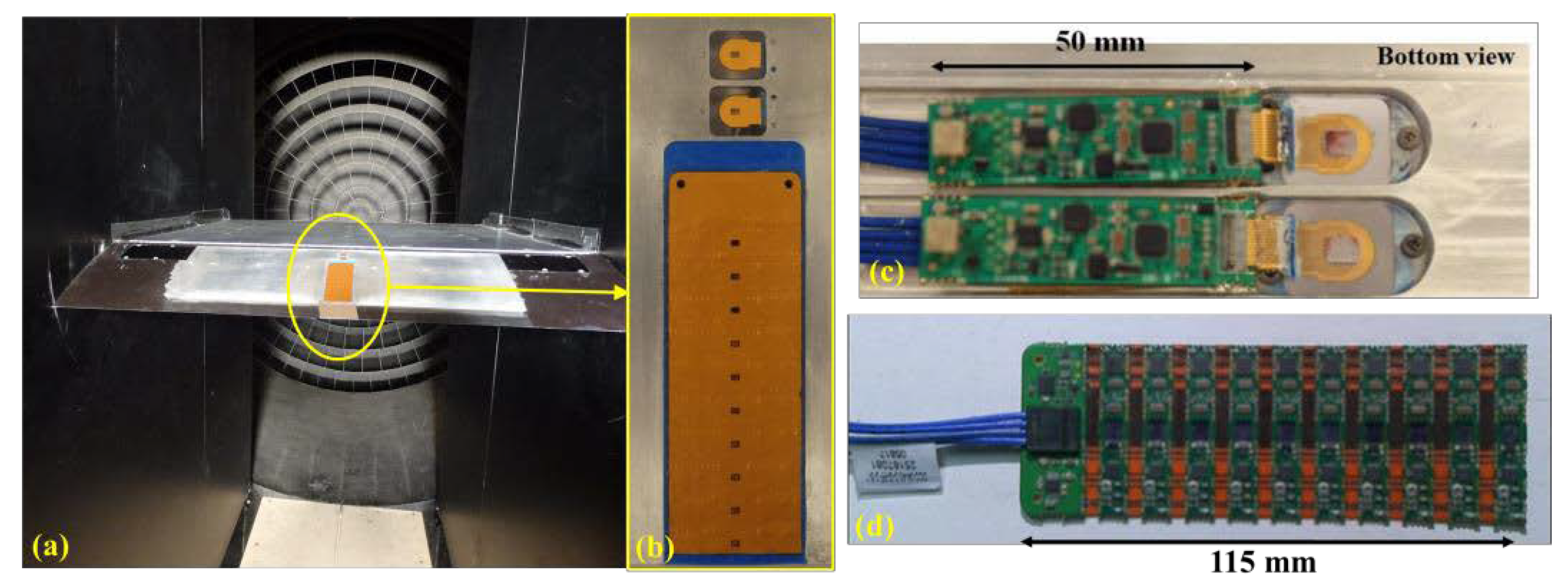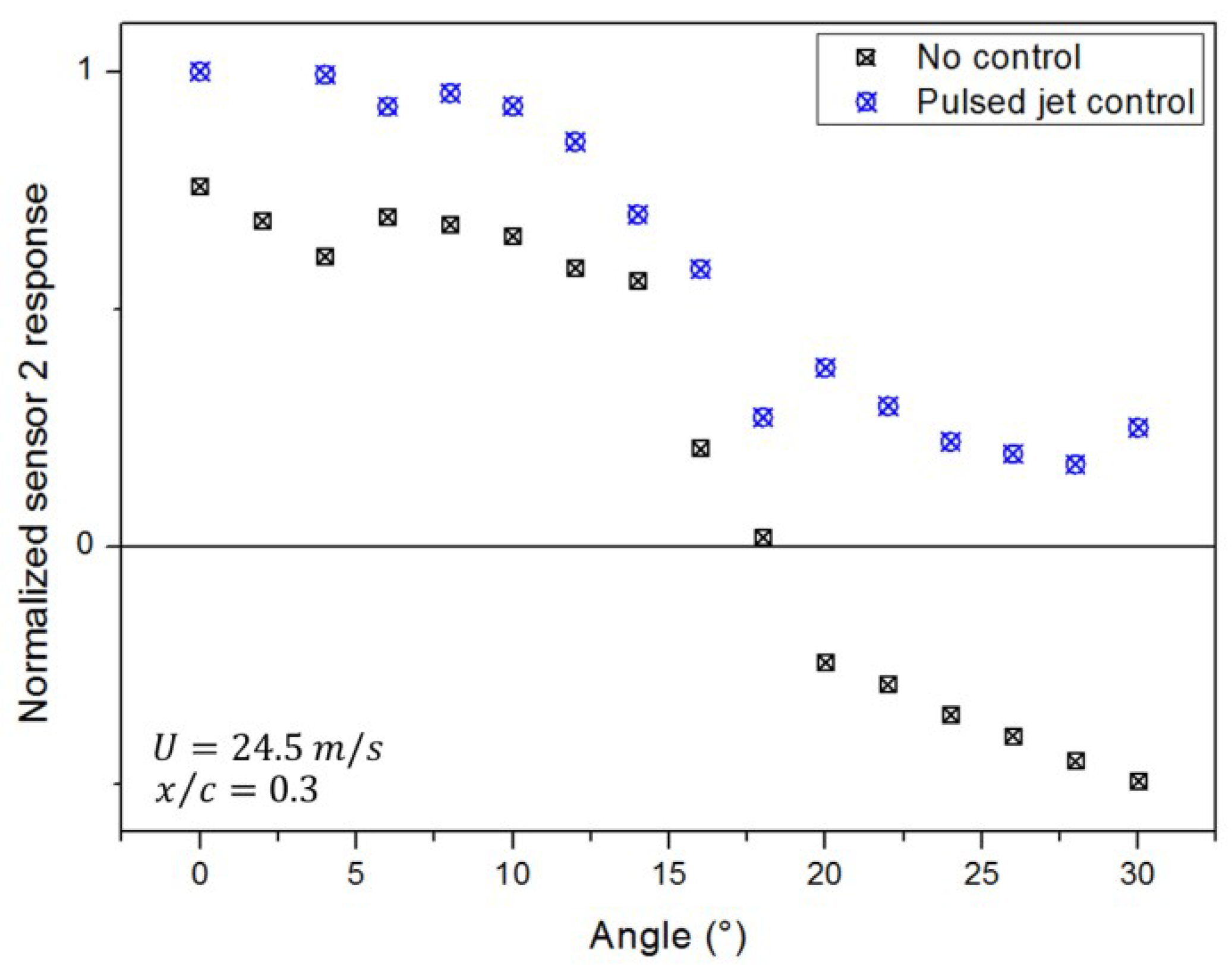Robust Calorimetric Micro-Sensor for Aerodynamic Applications †
Abstract
:1. Introduction
2. In Situ Measurements of a Jet Actuator Using the Calorimetric Micro-Sensor
3. Active Flow Control on a Flap Model Using an Array of Twelve Calorimetric Micro-Sensors
4. Conclusions
Acknowledgments
References
- MacMynowski, D.G.; Williams, D. Flow Control Terminology. Fundam. Appl. Mod. Flow Control 2009, 59–71. [Google Scholar] [CrossRef]
- Ghouila-Houri, C.; Claudel, J.; Gerbedoen, J.-C.; Gallas, Q.; Garnier, E.; Merlen, A.; Viard, R.; Talbi, A.; Pernod, P. High temperature gradient micro-sensor for wall shear stress and flow direction measurements. Appl. Phys. Lett. 2016, 109, 241905. [Google Scholar] [CrossRef]
- Ghouila-Houri, C.; Gallas, Q.; Garnier, E.; Merlen, A.; Viard, R.; Talbi, A.; Pernod, P. High temperature gradient calorimetric wall shear stress micro-sensor for flow separation detection. Sens. Actuators Phys. 2017, 266, 232–241. [Google Scholar] [CrossRef]
- Ghouila-Houri, C.; Gallas, Q.; Garnier, E.; Merlen, A.; Viard, R.; Talbi, A.; Pernod, P. Wall Shear Stress Calorimetric Micro-Sensor Designed for Flow Separation Detection and Active Flow Control. Proceedings 2017, 1, 376. [Google Scholar] [CrossRef]





Publisher’s Note: MDPI stays neutral with regard to jurisdictional claims in published maps and institutional affiliations. |
© 2018 by the authors. Licensee MDPI, Basel, Switzerland. This article is an open access article distributed under the terms and conditions of the Creative Commons Attribution (CC BY) license (https://creativecommons.org/licenses/by/4.0/).
Share and Cite
Ghouila-Houri, C.; Ott, C.; Viard, R.; Gallas, Q.; Garnier, E.; Talbi, A.; Pernod, P. Robust Calorimetric Micro-Sensor for Aerodynamic Applications. Proceedings 2018, 2, 794. https://doi.org/10.3390/proceedings2130794
Ghouila-Houri C, Ott C, Viard R, Gallas Q, Garnier E, Talbi A, Pernod P. Robust Calorimetric Micro-Sensor for Aerodynamic Applications. Proceedings. 2018; 2(13):794. https://doi.org/10.3390/proceedings2130794
Chicago/Turabian StyleGhouila-Houri, Cécile, Célestin Ott, Romain Viard, Quentin Gallas, Eric Garnier, Abdelkrim Talbi, and Philippe Pernod. 2018. "Robust Calorimetric Micro-Sensor for Aerodynamic Applications" Proceedings 2, no. 13: 794. https://doi.org/10.3390/proceedings2130794
APA StyleGhouila-Houri, C., Ott, C., Viard, R., Gallas, Q., Garnier, E., Talbi, A., & Pernod, P. (2018). Robust Calorimetric Micro-Sensor for Aerodynamic Applications. Proceedings, 2(13), 794. https://doi.org/10.3390/proceedings2130794



